If you are looking wholesale lighting solutions, click here.

Fluorescent tubes pass current to power mercury vapour, emitting ultraviolet light. The tube then reflects the UV light as bright and visible light. These tubes are commonly used in homes, offices, and other commercial lighting fixtures.
If you want to buy fluorescent lamps or tubes, this article is a must-read, as it explains the fluorescent tube sizes and applications using charts and visuals.
Fluorescent tubes are a common light type in residential and commercial properties. They use mercury vapours and phosphor coating to provide light.
As the electric current flows through the tube, it heats the mercury, emitting ultraviolet radiation. The phosphor coating then converts the UV light to bright and visible light.
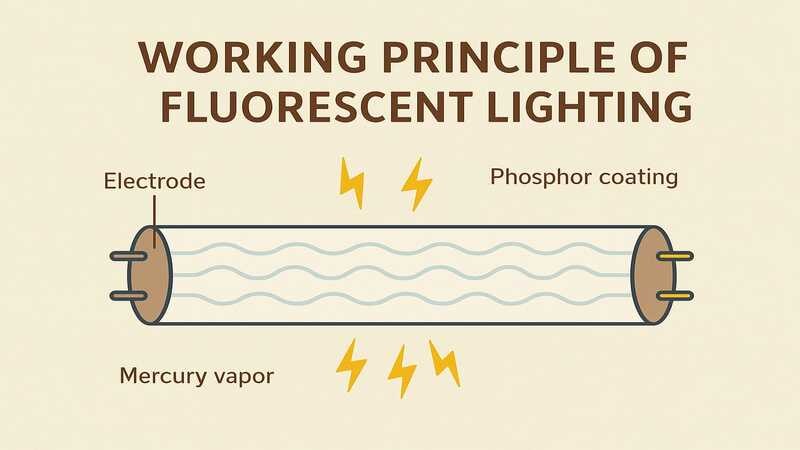
Fluorescent lighting sources are commonly available in two different types. The first is linear fluorescent tubes; these tubes are long and straight. The sleek design makes this tube a perfect under-cabinet lighting source.
The second type is compact fluorescent lamps (CFLs), which are curved and fit in bulb sockets to produce light. These types are equally energy efficient and distribute similar, uniform bright light.
These lights are generally used in office buildings, warehouses, garages, basements, and classrooms—the uniform visible light distribution makes them a popular lighting option.
Fluorescent tubes have a unique naming system. Each tube is given a separate code that consists of the letter T followed by a numeric digit. T in the code explains the shape, whereas the digit explains the diameter of the tube.
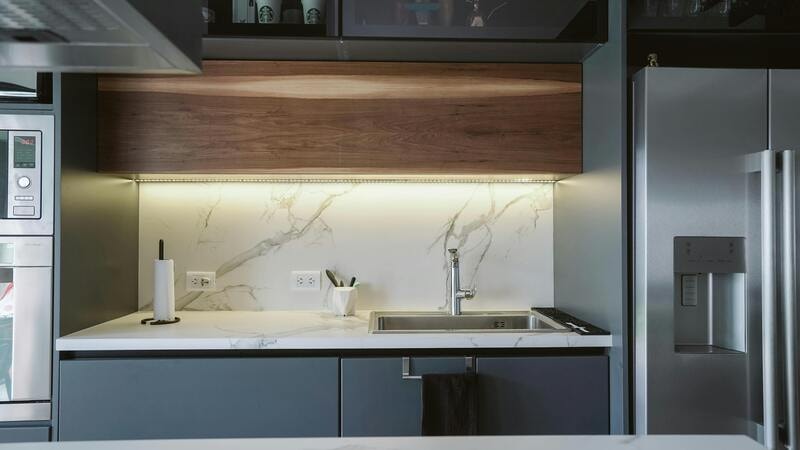
To further explain, we can say the T stands for the tubular shape of the tube, whereas the digit indicates the tube’s diameter in eighths of an inch.
For example in popular types T5, T8, and T12 the diameter is measured as: T8 = 8 / 8 inch = 1 inch = 25.4 mm, T5 = 5 / 8 inch = 0.625 inch = 15.875 mm, and T12 = 12/8 inch = 1.5 inches = 38.1 mm
The codes help you identify the correct type of tube for your needs. T5 tubes are small and are used when spacing is small or when high light output is required.
T8 tubes are commonly used in schools and residential properties to create a sleek look. T12 tubes are thick and are primarily installed in old settings.
Fluorescent light tubes vary in length, diameter, and wattage. Procurement managers must determine the type suitable for their applications.
A detailed comparison of different tube types based on their length (both in inches and mm), diameter (both in inches and mm), and wattage is given below:
| Tube Type | Nominal Lengths (in.) | Metric Lengths (mm) | Tube Diameter | Metric Diameter | Power |
|---|---|---|---|---|---|
| T2 | 6",9",12",18",24" | 150 mm, 225 mm, 300 mm, 450 mm, 600 mm | 1/4 inch (≈ 0.25") | 6.35 mm – 7 mm | 6W - 13 W |
| T4 | 6", 12", 18", 24", 36" | 150 mm, 300 mm, 450 mm, 600 mm, 914 mm | 1/2 inch (0.5") | 12 mm | 6W - 20W |
| T5 | 22", 34", 46" | 559 mm, 864 mm, 1170 mm | 5/8 inch (≈ 0.625") | 15.9 mm | 14W – 28W |
| T8 | 18", 24", 36", 48" | 457 mm, 610 mm, 914 mm, 1219 mm | 1 inch | 25.4 mm | 15W – 32W |
| T12 | 18", 24", 36", 48" | 457 mm, 610 mm, 914 mm, 1219 mm | 1.5 inches (1 1/2") | 38.1 mm | 20W – 40W |
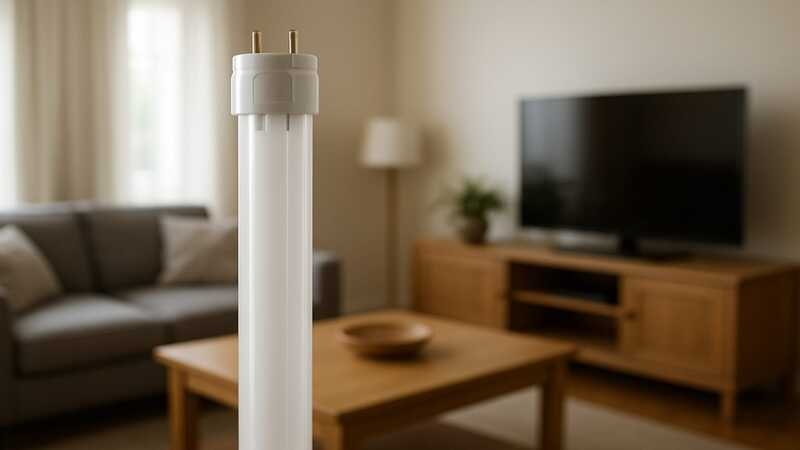
Finding the correct fluorescent bulb or tube size is crucial when buying or replacing it. In case you need to identify the size of your current tube, you need to follow the step-by-step procedure outlined as follows:
Tubes and all other lighting sources mostly have printed labels attached to them. These labels help buyers understand the details relevant to tubes like their type, length, and wattage range. You can easily determine your tube size by reading the label. Another option is to ask the manufacturer for the tube specs.
A great option to identify the diameter is by using a caliper or a ruler. To easily figure out the size of a tube, make sure to convert the diameter to eighths of an inch.
Remove the tube safely from the fixture and measure the length from one end to the other using a ruler or other measuring tool. While measuring the tube, make sure to exclude pins for accuracy.
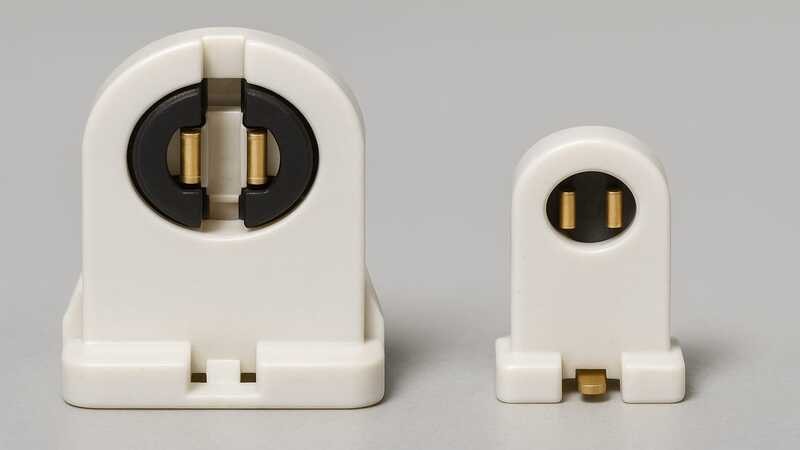
All fluorescent tubes have metal pins at the ends, which connect them to the fixtures. Each tube type has a different pin. For example, the T8 tube uses a G13 configuration, whereas the T5 uses a G5 pin. Thus, knowing the socket type before buying the tube is essential.
By following the steps mentioned above, you can easily find out the size of your tube. Facility managers or electricians need to remember that accuracy in measurement is important, so it’s better to take time to ensure precision.
The terms fluorescent bulbs and tubes are typically used interchangeably, but they are not the same. Fluorescent bulbs (CFLs) are compact, spiral, or twisted in shape, and fluorescent tubes are long, tabular, or cylindrical.
Tube sizes range from 18 to 48 inches, whereas fluorescent light bulbs are nearly 4 to 6 inches long. Tubes have specific diameters, like T5 = 5/8″ (15.9 mm), T8 = 1″ (25.4 mm), and T12 = 1.5″ (38.1 mm).
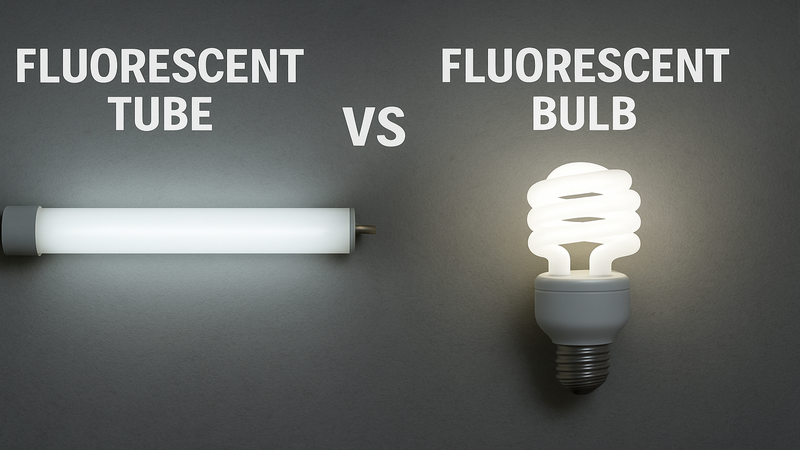
However, the diameter of incandescent bulbs varies depending on their shape, but they are mostly smaller than the tube’s diameter.
The labelling of both light sources also differs. Tube light labels are based on the shape and diameter, like T5 and T8. Incandescent bulb labels explain their shape and base, like an E12 bulb and a GU24 bulb.
Both fluorescent tubes and bulbs are energy efficient and provide uniform illumination. Buyers need to determine their needs to choose the one that best suits them.
When buying any lighting source, evaluate your light’s fixture type. If it has a pin connection, you may select a tube; if it has a screw-in socket, you must choose a bulb.
When it comes to replacing fluorescent tubes, electrical buyers and retailers cannot simply choose a tube because it is cheap or because of the amount of light it offers. Whether looking for a fluorescent tube for residential or commercial lighting fixtures, one must consider several factors to make the right choice.
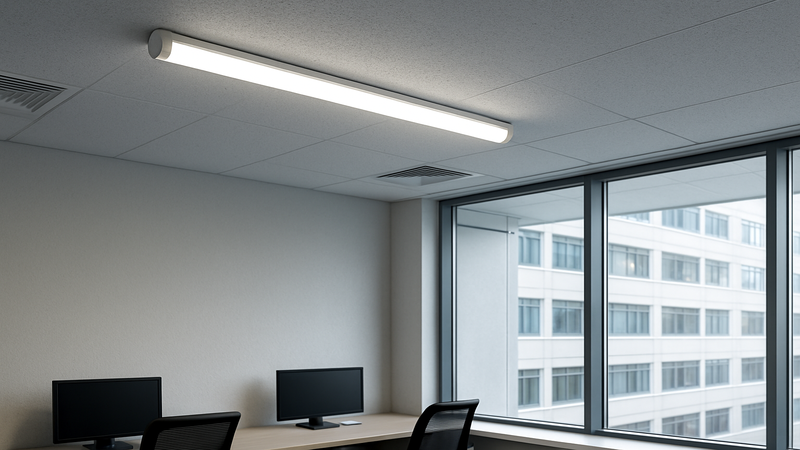
Some of the important factors that influence the choice of a tube are as follows:
As discussed previously, the fluorescent lamps come in numerous types. These types vary depending on wattage, size, diameter, and socket configuration.
Each fixture is made for a particular tube type. For example, T5 tubes are used in T5 fixtures, T8 tubes are for T8 fixtures, and T12 tubes are typically used with T12 fixtures. Examining the type of light fixture first and then choosing a compatible tube is vital.
Before buying a tube, evaluate your fixture’s rating. Different fluorescent lamps have different light outputs and wattage ranges. If the tube’s wattage range is not compatible with the fixture rating, your tube may experience overheating and other issues.
In case a 32-watt T8 tube is replaced with a lower-wattage model, its brightness can be reduced. Similarly, if a 32-watt T8 tube is replaced with a higher-wattage model, the brightness may exceed the light fixture’s safety limit and thus can contribute to common electrical hazards.
Another thing you should know while buying a tube is that the wattage affects light output and energy consumption. So, if you want increased brightness, consider lumens instead of watts.
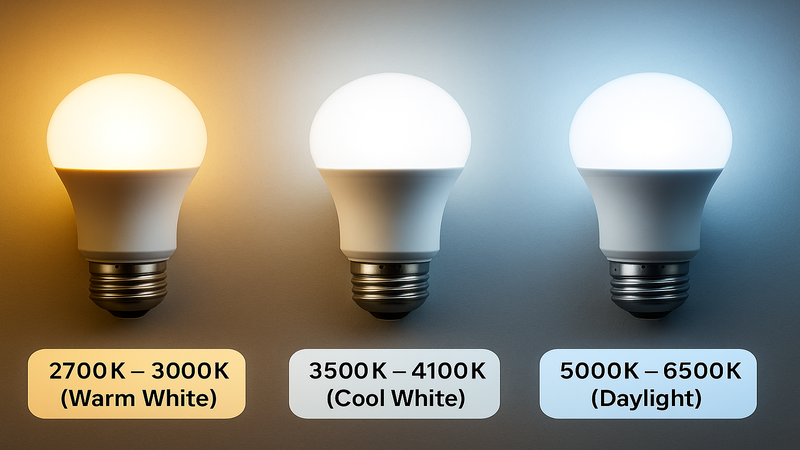
Color temperature refers to the appearance of light emitted by the tube. Fluorescent tubes come in multiple options, so homeowners or business owners can choose the color temperature that suits their lighting requirements.
The different temperatures include 2700K—3000K (Warm White), which offers a soft light ideal for residential properties, 3500K—4100K (Cool White), which provides a neutral light ideally used in indoor lighting fixtures, and 5000K—6500K (Daylight), which illuminates blue light best for commercial uses.
The variation in color temperature and high color rendering index allows the lighting buyers to choose the perfect light to improve the overall look.

A ballast is an essential electrical component of a fluorescent lighting system. It controls the voltage and current supplied to the tube. Ballasts are either magnetic or electronic, and fluorescent tubes are incompatible with all ballast types.
Magnetic Ballasts are older and work well with T12 tubes. Alternatively, electronic ballasts are efficient and work with T5 and T8 tubes. Check with the manufacturer or read the label to determine whether the ballast matches your selected tube.
This article has already discussed fluorescent tube sizes in detail. For the ease of retailers and electricians, a quick and scannable chart illustrating the fluorescent tube sizes is as follows:
| Overall Size | Tube Diameter | Approximate Length (ft) | Probable Classification |
|---|---|---|---|
| 48 inches | 1 inch | 4 feet | T8 |
| 96 inches | 1.5 inches | 8 feet | T12 |
| 46 inches | 5/8 inch (≈ 0.625") | ~3.8 feet | T5 |
The chart above shows that if your tube diameter is 1″, and is around 4 ft long, the tube type is likely T8.
Some quick tips to find out the size of fluorescent lamps or tubes easily are as follows:
One of the common replacements for fluorescent lamps is the LED tubes. LED tubes can be used instead of fluorescent lights directly or by making some modifications. Below is a detailed comparison of the similarities and differences of LED light vs fluorescent tube:
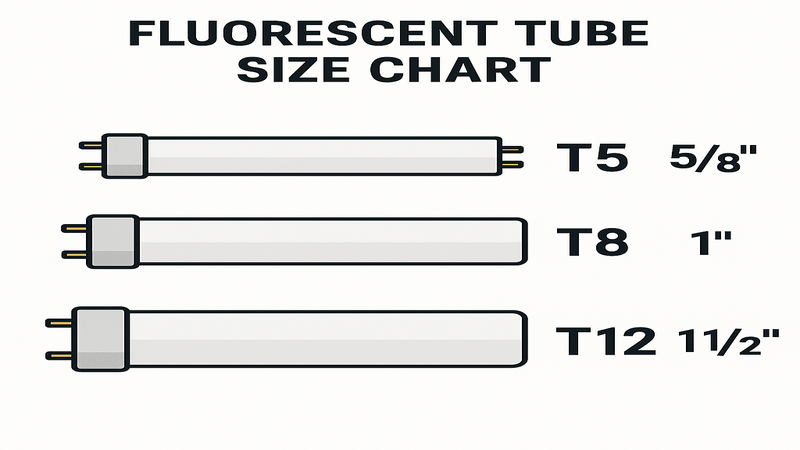
LED tubes and linear fluorescent lamps are mostly the same size; thus, physical dimensions are the same and can be switched easily. A common T8 fluorescent tube is also available in a T8 LED tube, which means you can easily replace a T8 fluorescent light tube with a T8 LED tube or vice versa.
When switching from fluorescent to LED tube light, the most important factor to consider is the ballast. Fluorescent lights need a ballast to work safely; however, LED tubes don’t necessarily need a ballast.
There are two types of LED tubes based on how they behave with a ballast. The first type is the Plug-and-play direct replacement. This light works with a ballast and is easy to install, as no rewiring is needed. However, one must check if the ballast is compatible with the tube.
The Second type is the Ballast Bypass (Direct-Wire). This type does not work with ballasts and requires them to be eliminated or bypassed during installation. This type of LED light is difficult to install but consumes less energy, delivers high light output, and needs fewer maintenance and replacement.
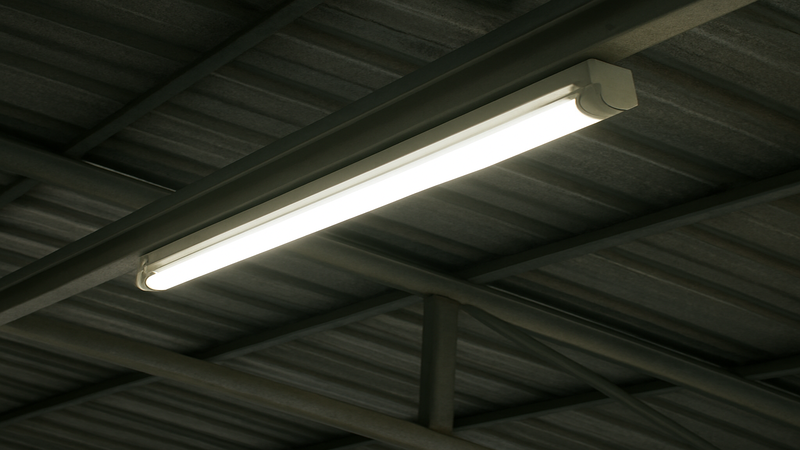
Fluorescent lamps, bulbs, and lights are great indoor and outdoor lighting fixtures, but they are now being replaced with alternative sources, with LEDs being the most popular.
Fluorescent lamps and tubes consume more energy and use mercury, which is harmful to health. As a result, people are switching to LED tube lights as they consume less energy, are safe for the environment, and last longer than fluorescent lights.
Fluorescent tubes come in different sizes to suit various requirements and are common in industrial and residential settings. To choose the right tube, it is essential to determine its benefits and size.
Due to their benefits, LED lights are now replacing fluorescent lighting sources. Their dimming features make them a popular option for adding aesthetics to settings.
Whether you are buying fluorescent lamps, LEDs, or any other light, make considerable efforts to choose a reliable supplier to enjoy the benefits in the long run.
With more than a decade of experience, Risun Corp is a reliable partner for all your fluorescent lighting needs. We possess the necessary skills and knowledge to meet customers’ changing lighting demands.
Risun Corp’s ability to offer tailored lighting solutions puts it far ahead of its competitors. Our expert team uses an innovative approach to meet our customers’ unique requirements. With comprehensive market knowledge, we continue to deliver the best lighting solutions.
So what are you waiting for? Contact us today to get a personalised bulk quote for your business.
To determine the size of a fluorescent tube, you need to measure the length and diameter of the current tube. The easiest way to determine your desired size is to check the code.
Tube light with code T8 diameter is 1 inch, whereas T12 diameter is 1.5 inches. Standard fluorescent tube lengths are 2, 4, or 8 feet long.
The simplest way to determine if you have a T8 or T12 tube is by measuring the tube’s diameter. A T8 tube diameter is around 1 inch, whereas a T12 tube is thick and measures 1.5 inches. If your tube is dense, it’s T12; if it is slim, it is T8 or T5. Similarly, you can look at the tube label to determine the type.
T4 and T5 tubes differ in terms of their sizes and uses. T5 tube has a diameter of ⅝ inches, whereas T4 has a smaller diameter of 4/8 inches.
T5 tubes are commonly used in commercial and industrial applications as they offer high light output and lumens, and T4 is a common under-cabinet lighting source.
Generally speaking, LEDS are a better choice than fluorescent tubes. They consume less energy and last longer than fluorescent tubes. Most importantly, these lights are free from mercury traces and thus are safe for the environment.
The cost of LED lights and lamps is high initially, but the long-term benefits, including fewer replacements and maintenance costs, make them reliable.
Fluorescent lamps are widely used in residential and commercial properties. These tubes offer enough light to assist with conducting tasks efficiently. In offices and schools, fluorescent tubes are low-cost and effective lighting sources.
In warehouses and garages, these tubes ensure even distribution of light. In residential settings, these lights offer ample light while reducing electricity costs.
Comprehensive Lighting Solutions for MRO Wholesalers and Professionals
send your inquiry
Hi, I'm the author of this post, and I have been in this field for more than 15 years. If you want to wholesale lighting fixtures or lighting related product, feel free to ask me any questions.
Learn More >>Download our catalog to view all of our lighting products.
Ready to get started ?
Send Your InquiryOur team will get back to you promptly

please
download
Get notified about new products
Our team will get back to you promptly!
Add your first comment to this post